Literature-Based Learning: Creating a Rhythm to your Days
July 23, 2014
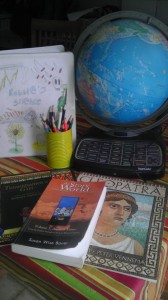 I don’t know about the rest of you, but lately my brain has been in planning mode. Ordering material for the new school year, rearranging books on our shelves, making lists of school supplies we need to buy. It’s one of my favorite times of the year!
I don’t know about the rest of you, but lately my brain has been in planning mode. Ordering material for the new school year, rearranging books on our shelves, making lists of school supplies we need to buy. It’s one of my favorite times of the year!
But today, I wanted to talk a bit about creating rhythm within your day. Especially when you are new to a literature-based lifestyle of learning, it can be tricky to figure out how to plan your day out. And when you look at the list of what you want to accomplish in your day: math, spelling, grammar, copywork, poetry, memory work, read alouds, history, art…well, you get the idea. It can be a little overwhelming, but it doesn’t have to be!
Let’s walk through a typical day in my literature-based homeschool. During the school year, I try to enforce an early bedtime so that we can begin our day at a reasonable time – so my children are all up and sitting at the kitchen table ready for breakfast at about 8am. As I serve them their breakfast, I make myself a cup of tea and grab our current reading – I usually do poetry, fairy tales, or mythology over breakfast. As they eat, I read, and then we discuss the reading. Sometimes it’s just a quick narration, but other mornings we will follow rabbit trails or have deeper discussions. Then I send everyone to get dressed and we dive into the rest of our daily activities.
My high schooler is fairly independent. She joins us for read alouds, but otherwise, she’s doing her own thing. This school year she’ll be joining in with Grade 7 – Exploring Your World, with some added assignments and readings to make it more high school level. I check in with her right after breakfast to discuss the day’s assignments, and we’ll talk off and on throughout the day if she needs anything, but otherwise, she just takes her work to her room and gets it done.
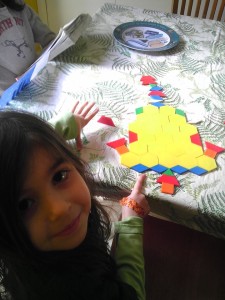 Meanwhile the twins are either practicing their musical instruments or doing math, so I sit down with my youngest and we read from her basket of books. We’ll be doing Kindergarten – Around the World this fall. Thus far, I usually pull out a few titles that I think she’ll enjoy or if she has a current interest (for a while it was bugs, then China, and lately it’s anything animal related). Sometimes she’ll be inspired to draw a picture about what we’ve been reading, but I don’t expect any output from her just yet. Mostly, we just read and talk about the story. Sometimes I’ll plan a fun art project or a simple science experiment, but mostly, she just listens to stories and plays. I like to keep it very relaxed and unschooly in the preschool years.
Meanwhile the twins are either practicing their musical instruments or doing math, so I sit down with my youngest and we read from her basket of books. We’ll be doing Kindergarten – Around the World this fall. Thus far, I usually pull out a few titles that I think she’ll enjoy or if she has a current interest (for a while it was bugs, then China, and lately it’s anything animal related). Sometimes she’ll be inspired to draw a picture about what we’ve been reading, but I don’t expect any output from her just yet. Mostly, we just read and talk about the story. Sometimes I’ll plan a fun art project or a simple science experiment, but mostly, she just listens to stories and plays. I like to keep it very relaxed and unschooly in the preschool years.
By this time the twins are ready to move on to the next thing, so I’ve put the week’s dictation on the board and we go through it together – the first day we look it over and make note of any words they need to practice spelling, any interesting punctuation, we might do a quick grammar study, and then they carefully copy it down. If there were words they needed to practice, they’ll copy them down 5 times each. This year we’ll be taking a break from formal grammar to really focus on writing.
I also like to have some sort of writing prompt on the whiteboard at least once a week, usually on Fridays, Just something to stimulate creative writing. I really like the book Unjournaling: Daily Writing Exercises That Are Not Personal, Not Introspective, Not Boring!. Even the high schooler joins in for this. They’re usually really interesting, thought provoking, or silly – nothing overly personal (just try to get the twins to write about their feelings – it’s not going to work!).
When they’ve finished this, I send them to do their silent reading and if it’s a narration day (I assign these 3 days out of the week), they’ll choose a narration card and do the assignment. These are almost always done in writing at their age, and it serves as their composition.
By now, it’s around 11am and if the weather is nice, I send them out to get a bit of exercise or 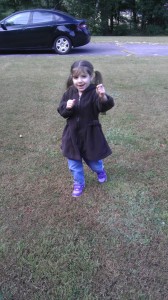 complete a nature study assignment. When they come in, its lunch time and we dive into our current read aloud. This is also when we go over memory work – we’ll take turns around the table and everyone gets a chance to practice. Over the summer, we’ve been reading through The The Hunger Games Trilogy
complete a nature study assignment. When they come in, its lunch time and we dive into our current read aloud. This is also when we go over memory work – we’ll take turns around the table and everyone gets a chance to practice. Over the summer, we’ve been reading through The The Hunger Games Trilogy.
After lunch, we’ll do the day’s history or geography assignment, and or science lesson. This is what I consider to be the fun part of our day. We’ll discuss the reading, complete any activity pages, look at our giant wall map and talk about where things were happening in our lessons, look up links from our reading, work on a research project, do an experiment, write a short report, or add to our timeline. We don’t do all of these things every day – some days we only read a chapter from our spine book and discuss the reading. Some days we might complete mapwork, timeline work, and a science experiment. If it’s an art day, we’ll complete an art project here as well. This is really the meat of our days – it takes us anywhere from 45 minutes to 2 hours.
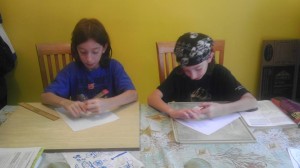 After this, we’ve finished our school day and the kids are free to scatter. Some days we’re done by 1pm, others it’s more like 3. But it doesn’t feel like we’ve been grueling away for hours and hours – it’s actually pretty relaxed. But we still get a lot accomplished! And there is a lot of flexibility here. This is only an example of an average day, so obviously some days will look quite different. Some days we just read and do math and call it good, and some days we are out of the house for other activities so all that gets done is math and we might double up on reading the following day. Some days I might call a ‘fun’ day and we just do art projects, read, watch a movie, play board games, or take a nature walk. It’s all about rhythm and finding the flow that fits your family best.
After this, we’ve finished our school day and the kids are free to scatter. Some days we’re done by 1pm, others it’s more like 3. But it doesn’t feel like we’ve been grueling away for hours and hours – it’s actually pretty relaxed. But we still get a lot accomplished! And there is a lot of flexibility here. This is only an example of an average day, so obviously some days will look quite different. Some days we just read and do math and call it good, and some days we are out of the house for other activities so all that gets done is math and we might double up on reading the following day. Some days I might call a ‘fun’ day and we just do art projects, read, watch a movie, play board games, or take a nature walk. It’s all about rhythm and finding the flow that fits your family best.
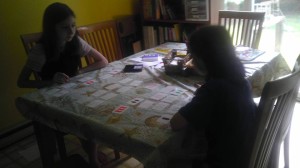 The rest of our day is open to us – the children are free to work on their personal side projects (currently they’re working on writing/drawing their own manga) or just play. I can finish up housework, work on lesson plans or other BYL related work, and maybe sneak in some extra personal reading time and whatnot before I have to cook dinner. Over dinner, their father will ask them to tell something they learned that day. Everyone is expected to tell something different and add to the discussion. It’s a fun way to sneak in a narration cause everyone wants to share something interesting.
The rest of our day is open to us – the children are free to work on their personal side projects (currently they’re working on writing/drawing their own manga) or just play. I can finish up housework, work on lesson plans or other BYL related work, and maybe sneak in some extra personal reading time and whatnot before I have to cook dinner. Over dinner, their father will ask them to tell something they learned that day. Everyone is expected to tell something different and add to the discussion. It’s a fun way to sneak in a narration cause everyone wants to share something interesting.
So that’s one example of a literature-based homeschooling day. Of course, yours may look completely different. We all want to see what other homeschool families are doing, assuming someone else has figured out the best way. But I think we’re all pretty similar in the end – just a bunch of moms and dads doing our best to educate our children at home.
So how does your day flow? Let me know in the comments – I love to hear how other people schedule their day!
Related Article(s):
- A Literature-Based Education: Teaching Academics
- A Literature-Based Education: Reading Aloud – Making it Happen
- A Literature-Based Education: Choosing Great Literature
- Literature-Based Learning: Creating a Rhythm to your Days
See Also:
A Literary Education: Adapting Charlotte Mason for Modern Secular Homeschooling (Paperback)
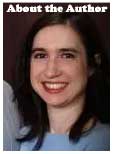 Emily Cook is the author and creator of the secular homeschool curriculum Build Your Library, a literature-based K-12 program infused with the teachings of Charlotte Mason. She writes full year lesson plans as well as shorter topical unit studies. Emily has been homeschooling her four children in Southern NH for 21 years. She is passionate about reading aloud to children of all ages and loves to share her love of literature with others. She and her family also makes incredibly dorky videos about homeschooling, books and more on Youtube at ARRRGH! Schooling. You can follow her on Facebook, Twitter and Pinterest.
Emily Cook is the author and creator of the secular homeschool curriculum Build Your Library, a literature-based K-12 program infused with the teachings of Charlotte Mason. She writes full year lesson plans as well as shorter topical unit studies. Emily has been homeschooling her four children in Southern NH for 21 years. She is passionate about reading aloud to children of all ages and loves to share her love of literature with others. She and her family also makes incredibly dorky videos about homeschooling, books and more on Youtube at ARRRGH! Schooling. You can follow her on Facebook, Twitter and Pinterest.
We’re doing our first literature-based year here with a first grader (while little brother, 3, wanders around too) and I’m having trouble keeping things balanced. If I spend the time I want to spend on school, then the house is a wreck. If I spend time on the domestics, then I feel like school gets put on the back-burner. Any thoughts on balancing the non-school tasks with educational tasks?
I find that I need to spend 10 minutes here and there on domestic tasks. So, first thing in the morning I throw laundry in the wash, and right after breakfast (while the kids are getting dressed) I was the dishes. I give the bathroom a wipe down when I take a shower. I fold laundry when the kids are doing independent work. Granted, it helps now that I have 3 older children, I can assign them some of the major chores, like dishes and vacuuming. I won’t say my house is immaculate – but by squeezing in small tasks throughout the day, I’m able to keep it relatively clean. I think it’s important at this stage of life to let go of the idea of having an immaculate, House Beautiful, home. I need to settle for clean enough, because educating my children is more important in the grand scheme of things.